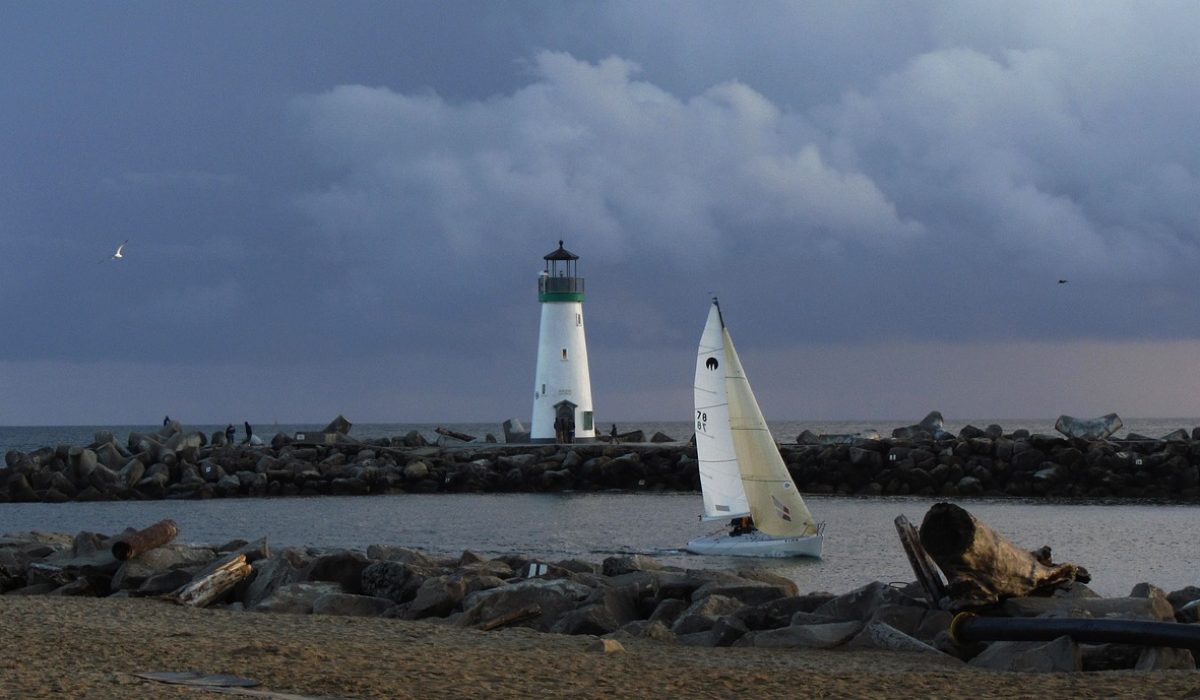Welcome to our blog post on the crucial topic of sailing safety. Whether you are a seasoned sailor or a novice ready to embark on your first voyage, understanding the importance of safety while sailing is paramount. In this article, we will delve into the essential sailing equipment that will ensure a safe journey, the seamanship skills you need to master, and provide valuable tips for navigating the waters safely. Additionally, we will explore the critical need for preparedness in handling emergencies at sea and discuss how promoting safe sailing practices is a collective effort within the sailing community. Join us as we dive into the world of safe sailing and explore the measures you need to take for a secure and enjoyable experience on the water.
Understanding The Importance Of Sailing Safety 👇
Understanding The Importance Of Sailing Safety
Sailing is an exhilarating and adventurous activity that allows individuals to explore the vastness of the open sea. Whether you are a seasoned sailor or a novice, understanding the importance of sailing safety is paramount. By following proper safety measures, you can ensure that your sailing experience is not only enjoyable but also secure. In this blog post, we will discuss some essential sailing safety tips that every sailor should be aware of.
One of the most critical sailing safety tips is to always wear a life jacket. Regardless of your swimming abilities or the length of your voyage, wearing a life jacket can be a lifesaver in case of an unexpected accident or emergency. A properly fitting and Coast Guard-approved life jacket should be worn by everyone on board at all times. This simple precaution can significantly increase your chances of survival in case of a capsizing, collision, or man overboard situation.
Another important aspect of sailing safety is ensuring that you have the necessary signaling devices on board. In the event of an emergency, distress signals can attract the attention of nearby vessels or search and rescue teams. These signaling devices may include flares, whistles, or distress flags. It is crucial to regularly check the expiration dates and functionality of these devices and replace them if necessary.
Proper navigation and understanding the rules of the sea are also vital for safe sailing. Before embarking on a voyage, it is essential to plan your route carefully. Familiarize yourself with navigation charts, weather forecasts, and any potential hazards along the way. By practicing good seamanship skills, such as maintaining a safe distance from other vessels and navigating in a predictable manner, you can minimize the risk of collisions and ensure the safety of yourself and others on board.
| Sailing Safety Tips | |
|---|---|
| Always wear a life jacket | Ensure everyone on board has a properly fitting and Coast Guard-approved life jacket. |
| Carry signaling devices | Have flares, whistles, and distress flags on board in case of emergency. |
| Practice good seamanship | Familiarize yourself with navigation charts, weather forecasts, and maintain a safe distance from other vessels. |
Lastly, it is crucial to have a well-equipped and properly maintained boat. Regularly inspect your vessel for any safety hazards or mechanical issues. Ensure that all safety equipment, such as fire extinguishers, first aid kits, and bilge pumps, are in good working condition. Additionally, make it a habit to inform someone onshore about your sailing plans, including your destination, expected return time, and contact information. This information can be invaluable in case of an emergency.
In conclusion, understanding the importance of sailing safety is key to enjoying a safe and enjoyable sailing experience. By following these essential sailing safety tips, such as wearing a life jacket, carrying signaling devices, practicing good seamanship, and maintaining a well-equipped boat, you can navigate the waters with confidence and ensure the safety of yourself and your crew. Remember, being prepared and knowledgeable about safety measures can truly make a difference in avoiding accidents and emergencies at sea.
Essential Sailing Equipment For A Safe Voyage
When setting out on a sailing voyage, it is crucial to have the right equipment to ensure a safe journey. Sailing can be a thrilling and adventurous experience, but it can also be unpredictable and potentially dangerous. Being prepared and having the essential sailing equipment onboard can make all the difference in preventing accidents and ensuring the safety of everyone on board. In this blog post, we will explore the must-have sailing equipment for a safe voyage.
Life Jackets: One of the most important pieces of safety equipment on any boat is a life jacket. It is crucial to have enough life jackets for every person on board, and they should be readily accessible in case of an emergency. Life jackets should be the right size and properly fitted to each individual to ensure maximum safety. It is also important to regularly inspect and maintain life jackets to ensure they are in good condition and functioning properly.
First Aid Kit: Accidents can happen at any time, and having a well-stocked first aid kit onboard is essential for handling minor injuries and emergencies. The first aid kit should include basic medical supplies such as band-aids, gauze, antiseptic solution, and adhesive tape. Additionally, it is recommended to have emergency medications like seasickness pills and pain relievers. It is crucial to regularly check and replenish the first aid kit to ensure that all supplies are up to date and in good condition.
Communication Devices: When sailing, it is crucial to have reliable communication devices to stay in touch with the shore and other vessels. A VHF marine radio is a must-have piece of equipment as it allows you to communicate with the Coast Guard and other boats in case of an emergency. It is also recommended to have a waterproof and floating handheld marine radio as a backup communication device. Additionally, a signaling device such as flares or an air horn should be included in your essential equipment to attract attention if needed.
Essential Sailing Equipment For A Safe Voyage Life Jackets First Aid Kit Communication Devices GPS Fire Extinguisher Anchor and Rope Navigation Tools Emergency Bilge Pump Emergency Rations
GPS: A GPS (Global Positioning System) is an essential tool for safe sailing. It helps you navigate and determine your precise location, which is crucial, especially when sailing in unfamiliar waters. A GPS can provide valuable information such as courses, speeds, and distance to waypoints, making it easier to plan and execute a safe voyage. Make sure to have a backup power supply for your GPS device to ensure it remains functional throughout the journey.
Fire Extinguisher: Fires are a significant risk on boats, and having a fire extinguisher onboard is essential for ensuring the safety of everyone on board. Choose a fire extinguisher specifically designed for marine use and ensure that it is easily accessible. Familiarize yourself with how to operate the fire extinguisher and regularly check the pressure gauge to ensure it is in working condition. It is also recommended to have a fire blanket on board to smother small fires quickly.
Anchor and Rope: An anchor and rope are essential for anchoring your boat securely, especially in case of engine failure or adverse weather conditions. The anchor should be appropriate for the size and type of your boat. It is crucial to know how to properly deploy and retrieve the anchor, as well as to ensure that the anchor chain or rope is in good condition and properly secured to the boat.
In conclusion, having the essential sailing equipment is vital for a safe voyage. Life jackets, a first aid kit, communication devices, GPS, fire extinguisher, anchor and rope are some of the crucial equipment that should be on every sailing boat. It is important to regularly inspect and maintain all the equipment to ensure it is in good working order. By being prepared and having the necessary equipment onboard, you can navigate the waters with confidence and enjoy a safe and enjoyable sailing experience.
Mastering Seamanship Skills To Ensure Safety
The ability to safely navigate the open sea requires more than just a passion for sailing. It takes a combination of experience, knowledge, and seamanship skills to ensure the safety of yourself and your crew. Mastering these skills is an essential component of becoming a proficient sailor. In this blog post, we will explore the importance of mastering seamanship skills and how they contribute to safe sailing.
One of the first skills every sailor should master is understanding the importance of proper navigation. Navigating the waters requires a deep understanding of charts, compasses, and navigational aids. By familiarizing yourself with these tools, you will be able to determine your position, plan your course, and avoid potential hazards. Additionally, being able to interpret weather forecasts and understand tides and currents is crucial for safe navigation.
Another crucial seamanship skill is the ability to handle sails and rigging. Being able to efficiently hoist, trim, and reef sails is essential for maintaining control of your vessel, especially in changing weather conditions. Knowing how to properly set and adjust the rigging ensures the stability and performance of your boat. Regular maintenance and inspection of sails and rigging are also necessary to prevent accidents caused by worn-out or damaged equipment.
- In addition to navigation and sail handling skills, mastering boat handling is vital for safe sailing. This includes understanding how your boat responds to various controls, such as the rudder, and knowing how to execute maneuvers like tacking and gybing. Practice docking and mooring in different conditions to build confidence and improve your ability to handle the boat in tight spaces. Knowing how to react quickly and appropriately to changing situations on the water can prevent collisions and other dangerous situations.
| Sailing Safety Tip | Description |
|---|---|
| Always wear a life jacket | Wearing a life jacket can save your life in case of an emergency. Make sure it fits properly and is in good condition. |
| Carry essential safety equipment | Have a marine first aid kit, flares, a bilge pump, and a fire extinguisher on board. These items can be life-saving in emergencies. |
| Stay updated on weather conditions | Check weather forecasts before heading out and stay alert during your journey. Sudden changes in weather can pose significant risks. |
Lastly, maintaining a constant focus and situational awareness is crucial for safe sailing. Keep an eye out for other vessels, obstructions, and potential hazards. Be aware of your surroundings at all times, and communicate with your crew to ensure everyone is on the same page. By staying vigilant, you can quickly identify and react to dangerous situations, preventing accidents before they occur.
In conclusion, mastering seamanship skills is essential for ensuring safe sailing. By acquiring a deep understanding of navigation, sail handling, boat handling, and maintaining situational awareness, you can mitigate risks and enjoy your time on the water with confidence. Remember to always prioritize safety by wearing a life jacket, carrying essential safety equipment, and staying informed about weather conditions. Happy sailing!
Navigating The Waters: Tips For Safe Sailing
Sailing is a thrilling and adventurous activity that allows individuals to connect with nature and explore the open water. However, like any other sport or recreational activity, safety should always be a top priority. Whether you are a seasoned sailor or a novice, it is crucial to understand and follow proper safety measures while navigating the waters. In this blog post, we will discuss some important sailing safety tips to ensure a safe and enjoyable voyage.
1. Check Weather Conditions: Before setting sail, it is essential to check the weather forecast for the duration of your journey. Unpredictable weather conditions can be extremely dangerous and can lead to accidents or mishaps. Make sure to use reliable sources for weather updates and avoid sailing during storms or adverse weather conditions.
2. Use Safety Equipment: Equipping your boat with essential safety gear can make a significant difference in case of an emergency. Always keep life jackets, buoys, flare guns, first aid kits, and fire extinguishers on board. Additionally, make sure that all safety equipment is well-maintained, easily accessible, and in proper working condition.
3. Maintain Proper Navigation: Proper navigation is crucial to avoid collisions or getting lost at sea. Use navigational charts, compasses, and GPS systems to help you stay on course. Familiarize yourself with the waterways, buoys, and markers specific to your sailing area. It is also essential to be aware of any hazards such as shallow waters, rocks, or sandbars.
- Adhere to the “Right of Way” Rules: Understanding and following the right of way rules is essential to prevent accidents and maintain order on the water. Learn the basic rules of maritime navigation, such as giving way to vessels on your starboard side and yielding to larger vessels or those constrained by their draft.
- Communicate and Share Your Plans: Always inform a reliable person about your sailing plans, including your departure and expected arrival times. This ensures that someone is aware of your location and can raise the alarm in case of any unforeseen circumstances.
- Beware of Carbon Monoxide: Carbon monoxide poisoning can pose a serious threat to sailors. Be mindful of the exhaust from engines, generators, or even neighboring boats. Proper ventilation and regular maintenance of equipment can help mitigate the risks associated with carbon monoxide.
| Essential Safety Tips for Safe Sailing: |
|---|
| 1. Check weather conditions diligently. |
| 2. Always have essential safety equipment on board. |
| 3. Maintain proper navigation techniques. |
| 4. Adhere to the “Right of Way” rules. |
| 5. Communicate your sailing plans with someone reliable. |
| 6. Be cautious of carbon monoxide poisoning. |
By following these sailing safety tips, you can minimize risks and ensure a safe and enjoyable experience while navigating the waters. Remember, safety should always be a top priority, allowing you to fully embrace the wonders of sailing without compromising your well-being.
Handling Emergencies At Sea: Preparedness Saves Lives
The open sea can be a thrilling and unpredictable environment. As sailors, it is our responsibility to prioritize safety and be prepared for any emergencies that may arise. Whether you are embarking on a short day trip or a long-distance voyage, having the necessary knowledge and equipment is crucial for ensuring the well-being of everyone on board. In this blog post, we will discuss important tips and guidelines that can help you handle emergencies at sea effectively, ultimately saving lives.
1. Safety Equipment: Before setting sail, it is essential to have the right safety equipment on board. This includes life jackets for every individual, flares, fire extinguishers, first aid kits, and emergency signaling devices such as a whistle or an air horn. Regularly check and maintain this equipment to ensure its functionality.
2. Communication: One of the most important aspects of handling emergencies at sea is effective communication. Always carry at least two communication devices that are reliable and waterproof, such as handheld VHF radios or satellite phones. In case of an emergency, these devices will allow you to contact authorities or nearby vessels for assistance.
3. Emergency Action Plan: Every sailing crew should have a well-defined emergency action plan in place. This plan should outline the steps to be taken in various emergency situations, such as man overboard, fire, or grounding. Ensure that every crew member is familiar with the plan and knows their role in executing it swiftly and efficiently.
- 4. Weather Monitoring: Keeping an eye on the weather conditions is vital for safe sailing. Sudden storms or rough seas can increase the risk of emergencies. Utilize reliable weather forecasting services and regularly listen to marine weather reports. If adverse weather is predicted, it is wise to postpone your voyage or seek a safe harbor until conditions improve.
- 5. Man Overboard: Man overboard situations can be extremely dangerous if not handled swiftly. To increase the chances of rescuing someone who has fallen overboard, throw a lifebuoy or any floating object towards them, and immediately mark the spot where they entered the water. Shout, “Man overboard!” to alert the crew and follow the emergency action plan for a coordinated rescue effort.
| Emergency Situation | Proper Response |
|---|---|
| Fire on board | Sound the alarm, extinguish small fires with appropriate firefighting equipment, and prepare to abandon ship if the fire is uncontrollable. |
| Grounding | Take immediate action to assess the situation, stop the vessel if possible, and attempt to refloat. If unsuccessful, call for assistance and prepare to evacuate if necessary. |
| Collision | Quickly assess the damage and stabilize the vessel if required. Report the incident to the relevant authorities and exchange relevant information with the other party involved. |
By following these essential tips and guidelines, you can significantly enhance your preparedness for handling emergencies at sea. Remember that prevention is the best form of safety, so always prioritize regular maintenance and inspections of your sailing equipment. Stay vigilant, keep learning, and promote safe sailing practices to ensure that everyone enjoys a secure and memorable voyage.
Promoting Safe Sailing Practices: A Community Effort ⏬
When it comes to sailing, safety should always be a top priority. Whether you are an experienced sailor or a beginner, understanding and implementing proper safety practices is crucial to ensuring a safe voyage. Promoting safe sailing practices is not only the responsibility of individual sailors, but also of the entire sailing community. By working together and adhering to certain guidelines, we can all contribute to a safer and more enjoyable sailing experience.
One of the key aspects of promoting safe sailing practices is education. It is important for every sailor to have a solid understanding of sailing safety tips and guidelines. This includes knowledge of basic navigation rules, weather conditions, and emergency procedures. By educating ourselves and others, we can help prevent accidents and ensure a higher level of safety on the water.
Another important aspect of promoting safe sailing practices is communication. The sailing community can come together to share information, experiences, and best practices. This can be done through sailing clubs, online forums, or community events. By sharing knowledge and experiences, we can all learn from each other and further enhance our understanding of sailing safety.
Sailing Safety Tips Description 1. Wear a life jacket at all times Wearing a life jacket is one of the most important safety measures you can take while sailing. It can save your life in case of an accident or emergency. 2. Check weather conditions before setting sail Always check the weather forecast before heading out on the water. Avoid sailing in severe weather conditions as they can be extremely dangerous. 3. Know and follow navigation rules Understanding and abiding by navigation rules is crucial to prevent collisions and ensure the safety of yourself and others on the water.
By following these safety tips and promoting safe sailing practices within the community, we can minimize the risks associated with sailing and create a more secure environment for all sailors. Let’s work together to make sailing a safe and enjoyable experience for everyone.
Frequently Asked Questions
What is the importance of sailing safety?
Sailing safety is crucial to ensure the well-being and security of all individuals on board. It helps prevent accidents, injuries, and potential disasters at sea.
What are some essential sailing equipment for a safe voyage?
Some essential sailing equipment for a safe voyage includes life jackets, emergency flares, a first aid kit, a marine radio, navigational tools, and emergency signaling devices.
How can one master seamanship skills to ensure safety?
Mastering seamanship skills requires practice and experience. It involves learning navigation, boat handling techniques, understanding weather patterns, and being familiar with safety procedures and protocols.
What are some tips for safe sailing?
Some tips for safe sailing include maintaining a proper lookout, being aware of weather conditions, regularly inspecting and maintaining the boat, using safety harnesses when necessary, and always having a backup plan.
How important is preparedness in handling emergencies at sea?
Preparedness is crucial in handling emergencies at sea as it can make a significant difference in saving lives. Having emergency plans, proper communication equipment, and knowing the necessary procedures can help mitigate risks.
How can communities promote safe sailing practices?
Communities can promote safe sailing practices by organizing educational programs, sharing information about safety regulations, encouraging training courses, and establishing local safety guidelines.




